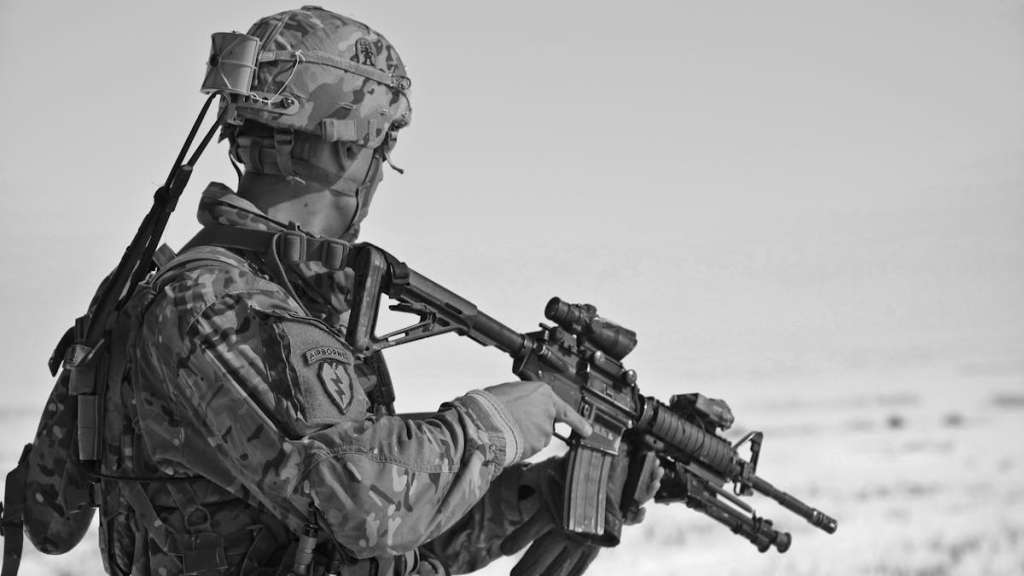
The impact of a war economy extends far beyond the immediate effects of conflict. As nations divert resources towards military efforts, the long-term consequences can shape economic, social, and political landscapes for years, even decades, after hostilities cease. Understanding these effects helps us grasp how societies rebuild and redefine themselves in the aftermath of war, often facing both opportunities and challenges that stem from this significant shift in priorities.
Main Points
- Economic restructuring and its implications for growth.
- The psychological effects on returning soldiers and civilians.
- Social inequalities exacerbated by wartime economies.
- Political changes and the rise of new governance structures.

Understanding the Concept of a War Economy: Definition and Characteristics
A war economy emerges in response to military conflict, significantly altering the dynamics of production and resource allocation. It generally prioritizes military needs over civilian consumption. Interestingly, this shift often leads to both economic growth in specific sectors and scarcity in others. During such times, the government typically exercises greater control over resources and often implements measures to incentivize production for war purposes. Here are some key characteristics of a war economy:
- Mobilization of Resources: Resources, both human and material, are redirected toward the war effort.
- Government Intervention: The state often increases its role, directing the economy and controlling production.
- Prioritization of Defense: Industries related to defense become paramount, overshadowing civilian industries.

Economic Instability: How a War Economy Affects National Financial Systems
War economies often lead to significant economic instability, reshaping national financial systems in unexpected ways. Governments prioritize military spending, diverting funds away from essential public services, which can exacerbate unemployment. Investors grow wary, often pulling out, leaving a vacuum in capital that stifles economic growth. Conflicts disrupt trade routes, complicating the flow of goods and raising prices. Consequently, citizens face a harsher reality. The intricate dance of war and economy isn’t merely theoretical; it touches lives profoundly.
The Ripple Effect
| Impact | Description |
|---|---|
| Inflation | Rapid price increases due to supply chain disruptions. |
| Unemployment | Deflected resources lead to job losses in non-military sectors. |
| Foreign Investment | Decreased due to perceived risks associated with conflict. |

Societal Impacts: Examining the Long-term Effects on Civilian Life and Employment
The long-term effects on civilian life and employment are profound and multifaceted. Society faces an evolving landscape, replete with challenges and opportunities. People feel the weight of economic fluctuations, as traditional roles shift dramatically. However, technological advancements, while promising efficiency, also generate anxiety about job security. Workers, especially in vulnerable sectors, grapple with adapting to these changes. Consequently, community ties strain, as individuals seek stability amidst uncertainty. It’s a balancing act; we must embrace innovation but remain mindful of its human costs.
Environmental Consequences: The Ecological Toll of Sustaining a War Economy
The pursuit of a war economy often imposes severe environmental costs that go unnoticed amid the chaos of conflict. Not only do military activities devastate local ecosystems, but they also lead to long-term degradation of natural resources. Furthermore, the manufacture and deployment of arms produce significant pollution, affecting air and water quality. This cycle of destruction leaves communities grappling with environmental burdens, which, curiously, seem to amplify the very issues that conflict often aims to resolve.
Key Impacts of a War Economy
- Habitat Destruction: Conflicts can lead to the obliteration of forests, wetlands, and wildlife habitats.
- Resource Mining: Warfare often accelerates the extraction of natural resources, depleting them at an alarming rate.
- Pesticide Use: Military operations frequently involve chemical agents, adversely impacting soil and local agriculture.
Moreover, the social implications cannot be overlooked. Warring nations often divert attention from sustainable practices to focus instead on short-term military objectives. Thus, while seeking security through militarization, they inadvertently sow the seeds of long-term ecological crises.
Post-War Recovery: Strategies for Transitioning from a War Economy to Sustainable Growth
Recovering from the ravages of war is a complex journey that demands a multifaceted approach. Countries must first prioritize the rebuilding of infrastructure, as it supports both economic activity and community morale. Engaging local populations in this process fosters a sense of ownership and unity. Additionally, implementing policies that encourage entrepreneurship can stimulate growth and innovation. However, it’s essential to strike a balance between immediate relief and sustainable development. Without this, the risks of falling back into conflict remain ever-present.
The Role of International Aid
Furthermore, international support plays a pivotal role. While external aid can provide crucial resources, it must be aligned with local needs to be effective. Neighbors can help each other by sharing resources and best practices. Ultimately, establishing a resilient economy requires not just financial investment, but also a genuine commitment to fostering long-term stability.
Conclusion
In conclusion, the long-term effects of a war economy reach far beyond the immediate financial gains and losses. Communities torn apart by conflict often struggle to rebuild in the aftermath, facing challenges that can persist for generations. The shift from a war economy to a peacetime one is rarely smooth. Resources that once fueled war efforts become scarce, and people may find it difficult to transition back to civilian life. As businesses adapt and evolve, the scars of past conflicts linger. However, it’s essential to remember that healing is possible. With support and understanding, societies can work together to overcome the remnants of a war economy. By investing in education, infrastructure, and inclusive policies, nations can foster resilience and hope for a brighter future. Ultimately, the path to recovery may be long, but it is paved with the dedication of those who dare to dream of peace.
Frequently Asked Questions
What is a war economy?
A war economy refers to the economic system or the economic policies that are adopted by a country during a time of war, where resources are redistributed to support military efforts and sustain the war.
How does a war economy impact civilian life?
A war economy often leads to shortages of goods and services for civilians, as resources are prioritized for military use. This can result in rationing, inflation, and decreased availability of everyday necessities.
Can a war economy lead to long-term economic changes?
Yes, a war economy can lead to significant long-term changes, including shifts in industrial production, changes in workforce demographics, and even the establishment of new technologies or industries that were initially developed for military purposes.
What sectors typically benefit in a war economy?
Sectors that typically benefit in a war economy include defense manufacturing, construction, energy production, and technology, as these industries are often focused on supporting military needs.
How do governments finance a war economy?
Governments may finance a war economy through various means, including increased taxation, borrowing, and creating money. They may also impose controls on wages and prices to manage inflation and direct resources efficiently.




